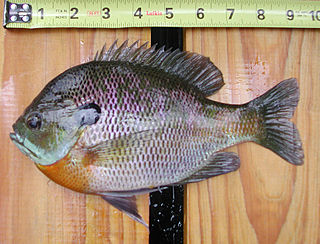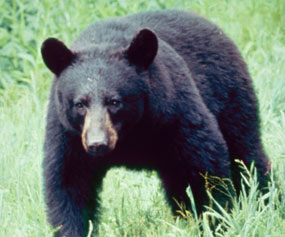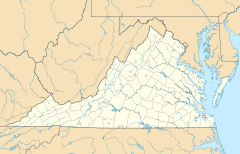
Mineral County is a county in the U.S. state of West Virginia. It is part of the Cumberland, MD-WV Metropolitan Statistical Area. As of the 2010 census, the population was 28,212. Its county seat is Keyser. The county was founded in 1866.

The Monongahela River — often referred to locally as the Mon — is a 130-mile-long (210 km) river on the Allegheny Plateau in north-central West Virginia and southwestern Pennsylvania. The river flows from the confluence of its west and east forks in north central West Virginia northeasterly into southwestern Pennsylvania, then northerly to Pittsburgh and its confluence with the Allegheny River to form the Ohio River. The river is navigable its entire length via a series of locks and dams.

The Shenandoah River is a tributary of the Potomac River, 55.6 miles (89.5 km) long with two forks approximately 100 miles (160 km) long each, in the U.S. states of Virginia and West Virginia. The principal tributary of the Potomac, the river and its tributaries drain the central and lower Shenandoah Valley and the Page Valley in the Appalachians on the west side of the Blue Ridge Mountains, in northwestern Virginia and the Eastern Panhandle of West Virginia.

Opequon Creek is a 64.4-mile-long (103.6 km) tributary stream of the Potomac River. It flows into the Potomac northeast of Martinsburg in Berkeley County, West Virginia, and its source lies northwest of the community of Opequon at the foot of Great North Mountain in Frederick County, Virginia. The Opequon forms part of the boundary between Frederick and Clarke counties in Virginia and also partially forms the boundary between Berkeley and Jefferson counties in West Virginia's Eastern Panhandle.
Back Creek is a 59.5-mile-long (95.8 km) tributary of the Potomac River that flows north from Frederick County, Virginia, to Berkeley County in West Virginia's Eastern Panhandle. Back Creek originates along Frederick County's border with Hampshire County, West Virginia, at Farmer's Gap in the Great North Mountain. Its name reflects its location to the west of North Mountain. The perspective of colonists from the east in the 18th century led them to call it "Back Creek", because it lay to the back of North Mountain.

Little Hunting Creek is a 3.6-mile-long (5.8 km) primarily tidal tributary of the Potomac River located in Fairfax County, Virginia, not to be confused with Hunting Creek farther north. A stone-arch bridge, completed in 1931, carries traffic on the George Washington Memorial Parkway across the narrow mouth of the creek, located 96.6 miles (155.5 km) upriver from the mouth of the Potomac. The Washington family built its Mount Vernon plantation on the Potomac River along both banks of Little Hunting Creek during colonial times. The creek is bordered by residential communities in addition to the Mount Vernon property. It is a popular location for recreational fishing, and much of the wildlife characteristic of the tidal Potomac wetlands can be spotted there.

Amherst-Plymouth Wildlife Management Area is a 7,061-acre (2,857 ha) protected area located in Putnam County, West Virginia. The site is along the banks of the Kanawha River and is popular for hunting Canada geese in the fall. Access is from West Virginia Route 62 between Bancroft and Hometown and from Manilla Creek Road and Heizer Creek Road off WV 62 north of Poca, West Virginia. Manilla Creek Road cuts across the north side of the Amherst-Plymouth WMA, and WV 62 follows the southern edge of the area alongside the Kanawha River.

Little Indian Creek Wildlife Management Area is located on 1,036 acres (419 ha) southwest of Westover in Monongalia County, West Virginia. The wildlife management area is centered on reclaimed former coal mine land along Little Indian Creek, a tributary of the Monongahela River.

Chickahominy Wildlife Management Area is a 5,217-acre (21.11 km2) Wildlife Management Area (WMA) in Charles City County, Virginia. It is the only WMA located in the coastal plain of tidewater Virginia consisting primarily of forested uplands with a lesser amount of wetland habitat. The area's namesake is the Chickahominy River, a tidal river which forms its eastern boundary. Morris Creek flows through the property, forming its southern boundary; other smaller creeks and marshes are also present. The forests mainly consist of mixed hardwoods and pines. The preserve is nearly level, with elevations ranging from 25 to 50 feet above sea level.

Burches Run Wildlife Management Area, formerly Burches Run Lake WMA, is located on 55 acres (22 ha) near Wheeling in Marshall County, West Virginia. Until 2005 the wildlife management area contained a lake impounded by a dam at risk of failure. The name change occurred after the dam was removed. The terrain climbs gently above Burches Run and is covered by a mature oak-hickory second-growth forest.

Center Branch Wildlife Management Area is located on 975 acres (395 ha) in Harrison County near Stonewood, West Virginia. The WMA is located on a former strip mine site, and contains several flat benches and high walls. Second growth oak-hickory and mixed hardwoods forests cover much of the land.

Bluestone Wildlife Management Area is a wildlife management area in southern West Virginia surrounding Bluestone Lake and the New River. The section of the lake from just upstream of the Bluestone River to Bluestone Dam is in Bluestone State Park; the rest of the lake in West Virginia basin comprises Bluestone WMA. Altogether, the WMA comprises 18,019 acres (72.92 km2) of land and water.

Horse Creek Wildlife Management Area is located in Wyoming County near Pineville, West Virginia. Located on 47.9 acres (19.4 ha) that includes a small lake, the open fields of the WMA are bordered by steep hardwood forest.

Hughes River Wildlife Management Area is located in Wirt County and Ritchie County near Parkersburg, West Virginia. Located on 10,000 acres (4,000 ha) that border both the Little Kanawha River and the Hughes River. The WMA terrain varies from river bottom to steep hillsides covered with second growth oak-hickory hardwood stands and younger pine-hardwood woodlots.

Mill Creek Wildlife Management Area is 1,470 acres (590 ha) of steeply forested woodlands located near Milton, West Virginia in Cabell County. Mill Creek WMA can be accessed from Johns Creek Road about three miles north from the Milton exit of I-64.

Morris Creek Wildlife Management Area is located near Clendenin, West Virginia in Clay and Kanawha counties. Located on 9,874 acres (3,996 ha) of steeply forested woodlands, the Morris Creek WMA can be accessed from Morris Creek Road north of Clendenin, or from Leatherwood Creek Road south of Clendenin.

Thorn Creek Wildlife Management Area, is located about 7 miles south of Franklin, West Virginia in Pendleton County. Thorn Creek WMA is located on 528 acres (214 ha) of steep terrain along hills above Thorn Creek.

Upper Deckers Creek Wildlife Management Area, is located about 1 mile (1.6 km) north of Reedsville, West Virginia in Preston County. Upper Deckers Creek WMA is located on 56 acres (23 ha), consisting of two small fishing ponds and surrounding forested rolling hills.





















